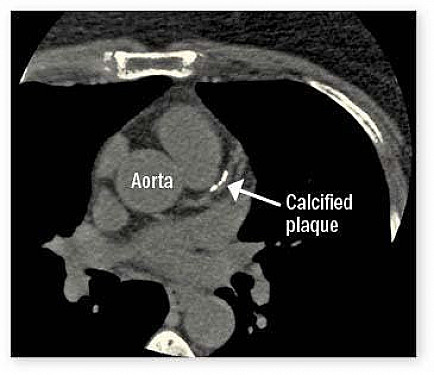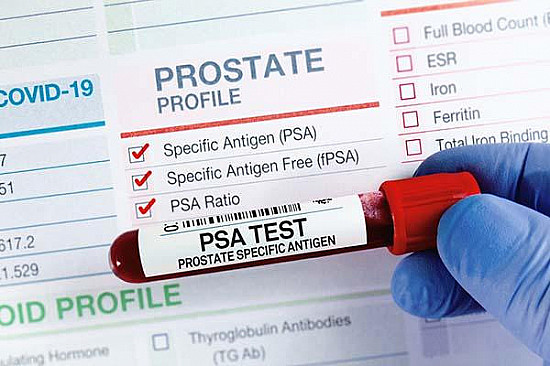What is a PSA test and how is it used?
While PSA screening is controversial, experts advise men to discuss the test with their health provider. Who should be tested, and what do the results mean?
- Reviewed by Marc B. Garnick, MD, Editor in Chief, Harvard Medical School Annual Report on Prostate Diseases; Editorial Advisory Board Member, Harvard Health Publishing

Editor's note: first of two parts; read part two here.
In this two-part series, we’ll describe the PSA test — how it’s used, and how doctors perform next steps in the event of an abnormal reading. Our first post addresses PSA screening for prostate cancer. In the second part of our series, we’ll describe how doctors use the PSA test to check the status of a cancer that’s being watched or treated.
PSA testing: Screening for prostate cancer
All prostate cells make PSA, a protein that helps to dissolve semen so that sperm cells can more easily reach and fertilize an egg. Normal and cancerous cells in the prostate each make PSA in similar amounts. But since cancer cells are leakier, they release more of the protein into the bloodstream.
PSA screening for prostate cancer came into widespread use during the early 1990s. But the test is controversial: prostate cancer grows slowly, and the concern is that PSA screening flags too many low-grade tumors that might not be harmful during a man’s life. Still, studies do suggest that PSA testing, because it can detect cancers at early and more treatable stages, can be lifesaving in some cases.
The US Preventive Services Task Force (USPSTF), an influential volunteer panel of experts in prevention and evidence-based medicine, takes a cautious stance on the matter. The USPSTF advises doctors to discuss the pros and cons of PSA screening in men ages 55 to 69, but also cautions against screening men over the age of 70, and gives no recommendation at all for men under 55.
Some expert groups recommend earlier screening for men in higher-risk groups. Black men, for instance, are about twice as likely to be diagnosed with and die from prostate cancer than white men. The American Cancer Society (ACS) advises PSA screening for Black men at age 45, or even earlier screening for men with first-degree relatives who developed prostate cancer at young ages, as well as for men who test positive for mutations in certain cancer risk genes, such as BRCA1 and BRCA2.
Importantly, activities that put pressure on the prostate gland (such as biking and sex) can cause PSA levels in blood to spike, so you should refrain from these activities for two to three days prior to testing. Health conditions affecting the prostate, such as infections, inflammation (prostatitis), or enlargement of the gland that occurs normally in older men (benign prostatic hyperplasia), can also cause PSA levels to spike in ways that are unrelated to cancer.
What is an abnormal PSA result?
In general, PSA levels over 4 nanograms per milliliter (ng/mL) in blood are considered abnormal. But doctors may also vary PSA cutoffs by age. For instance, a PSA of 3.5 ng/mL for a man in his 40s “is definitely abnormal,” says Dr. Marc B. Garnick, the Gorman Brothers Professor of Medicine at Harvard Medical School and Beth Israel Deaconess Medical Center, and editor in chief of the Harvard Medical School Guide to Prostate Diseases. However, a PSA of 5.5 ng/mL among men in their 60s, Dr. Garnick adds, may not be. It’s best to think of PSA values as being on a continuum, with higher levels associated with having prostate cancer.
PSA testing can sometimes miss a cancer diagnosis altogether. One study found that up to 15% of men with PSA levels under 4 ng/mL actually did have prostate cancer, and a sizeable fraction of these tumors were clinically significant. It’s also possible for high-grade cancer to be present without causing a large increase in PSA. That’s because high-grade cancer cells can lose their ability to actually make the protein.
What are next steps after an abnormal result?
It used to be that elevated PSA readings were followed routinely by a prostate biopsy, and then treatment if cancer was detected.
Today the paradigm is shifting. An abnormal result is now likely to be followed by a magnetic resonance imaging (MRI) scan, which can identify areas of the prostate gland that look suspicious for cancer. In Europe and some hospitals in the US, men with abnormal PSA readings might avoid an initial biopsy altogether if the MRI results are negative. However, many physicians will still opt for an initial biopsy in such cases, followed by periodic PSA tests and MRI scans to determine if further biopsies are needed.
If the initial biopsy and MRI results are positive, then doctors will perform a targeted biopsy focused on areas where the MRI showed evidence of cancer. If a cancer diagnosis is confirmed, then next steps will be initiated. Today, many low-grade cancers are watched with active surveillance, and treated only if follow-up biopsies and MRI scans show worsening of the disease. Higher-grade cancers will be treated immediately.
"The goal of this risk-adapted approach to screening," Dr. Garnick says, is to “identify clinically significant cancers that actually do need treatment while decreasing diagnoses of clinically insignificant cancers that do not.”
Variations on the PSA test
Rather than subject everyone with an elevated PSA reading to a biopsy, some doctors perform additional tests that involve more detailed interpretations of PSA levels.
- Free PSA testing looks for PSA that isn’t bound to other proteins. Low percentages of free PSA are associated with higher cancer risk.
- PSA density divides the total PSA level in ng/mL by the volume of the prostate gland in milliliters. A PSA density of 0.15 ng/mL or higher may be associated with prostate cancer.
- PSA velocity tracks how fast PSA levels increase from test to test.
- Prostate Health Index combines total PSA, free PSA, and a type of PSA called proPSA. Some evidence suggests it diagnoses prostate cancer more accurately than PSA by itself.
In the next part of our series, we’ll address how PSA is used as a test for monitoring and managing patients with prostate cancer.
About the Author

C.W. Schmidt, Editor, Harvard Medical School Annual Report on Prostate Diseases
About the Reviewer

Marc B. Garnick, MD, Editor in Chief, Harvard Medical School Annual Report on Prostate Diseases; Editorial Advisory Board Member, Harvard Health Publishing
Disclaimer:
As a service to our readers, Harvard Health Publishing provides access to our library of archived content. Please note the date of last review or update on all articles.
No content on this site, regardless of date, should ever be used as a substitute for direct medical advice from your doctor or other qualified clinician.















